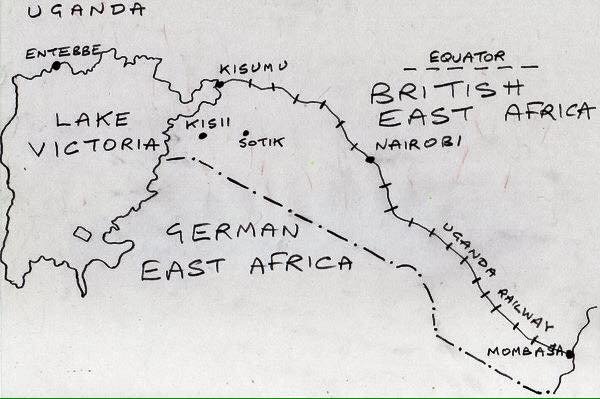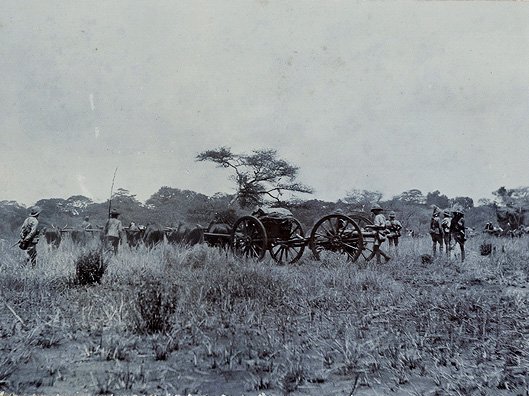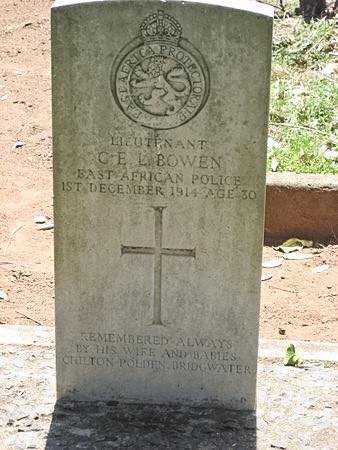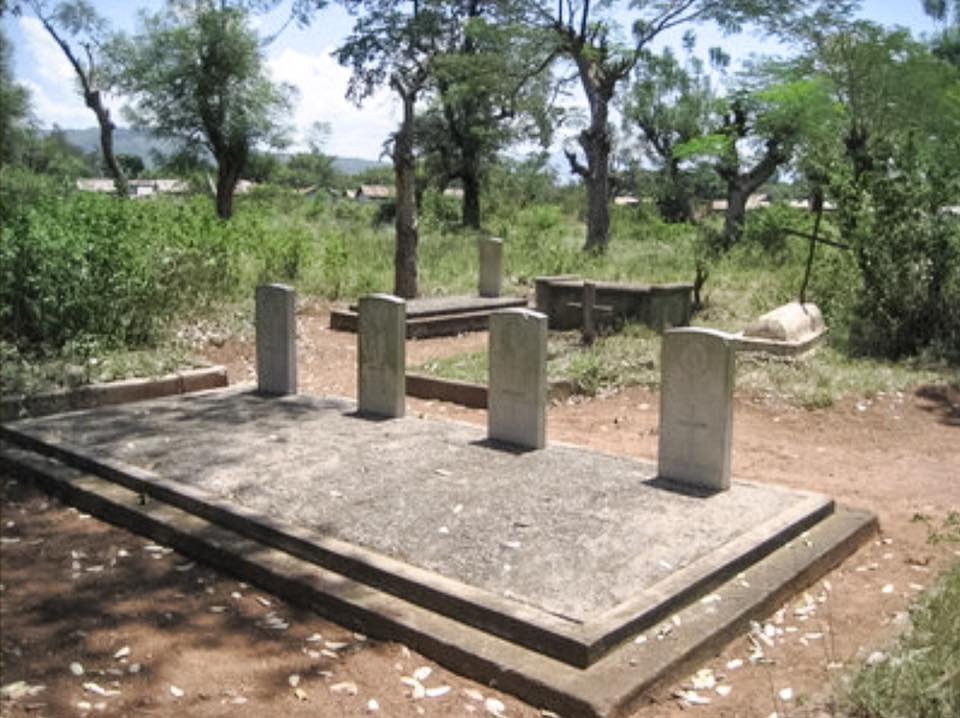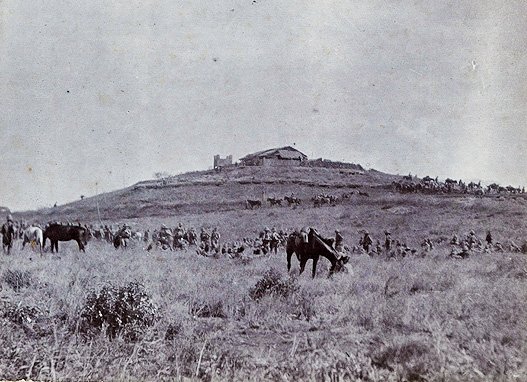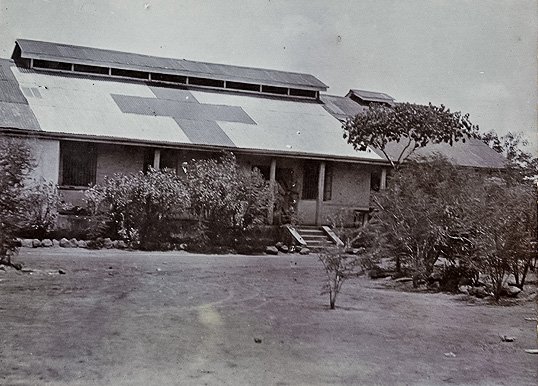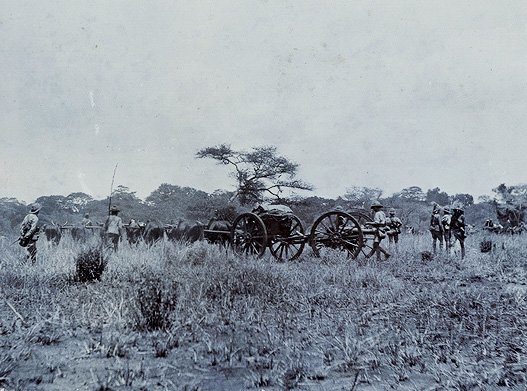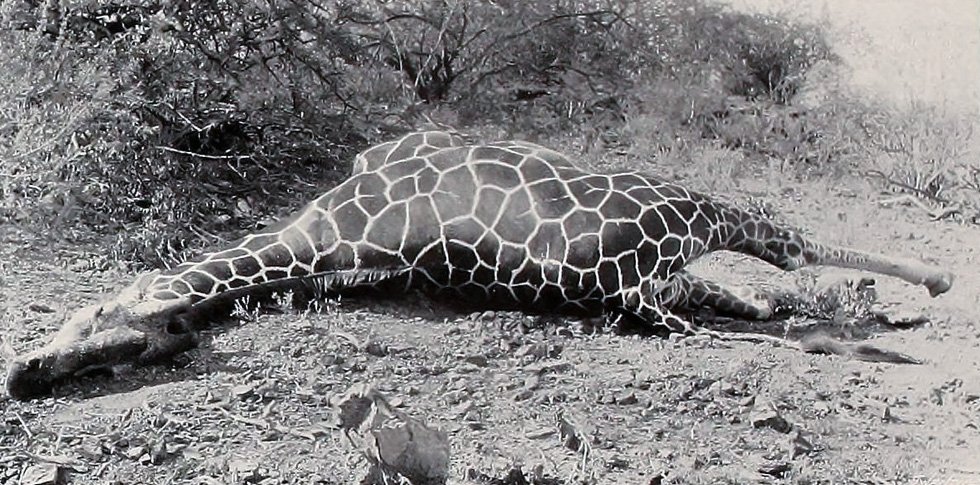2/ It is well known that WW1 action in Kenya was primarily focused around Taveta.
3/ However, there was nearly as much action in other parts of Kenya, including Victoria Nyanza, Tsavo and Maasailand.
5/ And as the war raged in western Kenya, a British telecoms expert, Reginald Kenneth Rice, was dispatched from the telegraph station at...
6/ ...Mombasa up to Lake Victoria to establish a telegraph receiver on SS Clement Hill, a passenger and cargo steamer on the lake.
7/ Reginald& #39;s brief was to ensure that the British were able to intercept German military communications.
8/ On 14th December 1914, he managed to intercept German Major von Stümer’s despatch to Captain Braunschweig. The intercepted message...
9/ ...read thus:
10/ ‘Despatch of troops here impossible. Wire situation in that place to Commando, from whom I am demanding reinforcements.
11/ Hold the line on the River Mara and Mwanza.’
12/ The interceptions by the British were so invaluable that they had a major effect on how the war turned out. In one of the intercepts,...
13/ ...the British learnt that the German army had left on the lake shore logs of firewood that had been punctured and inserted with...
14/ ...dynamite.
15/ The Germans intended the British to find the logs and use them as firewood, thereby blowing them into smithereens.
16/ Meanwhile, the British felt stretched and were in desperate need for manpower in Nyanza.
17/ Some local volunteers were rushed from around Nairobi and Kajiado to Kisumu when it was heard that the Germans were on the march in...
18/ ...Nyanza. The locals were put on the Winifred and sailed to Karungu Pier to cut the German march off. The whole idea was for the...
20/ But the port (Karungu) was already occupied by Germans who drove the British away and marched on Kisii on 11th September 1914.
21/ When locals tipped off the resident British settlers of the German approach, the latter hurriedly abandoned their dinner tables
22/ and evacuated.
23/ About thirty prisoners that the Brits held were released to help carry money - which included lots of coins, that was kept in the...
24/ ...strong room.
25/ Locals looted the Europeans’ houses in the wake of the evacuation and the Germans subsequently occupied the station.
26/ To counter the invaders, Lieutenant W. J. T. Shorthose, with forty KAR men and six settlers, bravely marched from Kericho.
27/ The aim was to retake Kisii.
28/ Hordes of Africans perched on adjoining hills were treated to live war drama as the two European armies exchanged gunfire around...
29/ ...Kisii town. It really did not matter to the locals which of the two European powers took possession of the town. To them, one...
30/ ...white man was no different from the other.
31/ Captain E. G. M. Thorneycroft was killed and Charles Grey, brother of Sir Edward Grey, the British Foreign Secretary, was wounded.
32/ He had to have his arm amputated and was actually, later on in 1928, killed by a rogue buffalo.
34/ Sir Edward must have had a very bitter opinion of East Africa as he had lost yet another brother to a lion in then British East Africa.
35/ But let& #39;s get back to the war action.....
36/ ...thinking that the British force was much larger than it was, the Germans decided to retreat from Kisii and the British reoccupied...
37/ ...the town. The settlers and officials returned to find everything looted, except for a piano belonging to a certain Mrs. Spencer.
38/ The story among the settlers at the time was that when a Kisii chief called Orere sat on the piano, its notes sounded very loudly a
39/ nd the locals took off in a panic, believing that the sound was of the white man& #39;s evil spirits.
40/ 45 Africans and 15 whites on the German side were killed in the Kisii battle. The British on their part lost 20 Africans and one white.
41/ The German whites were buried in a common grave, with Father J. A. Wall of the nearby Roman Catholic mission at Nyabururu presiding...
42/ ...over the service. Briton Thorneycroft was buried near a tennis court in the town.
44/ By mid-1915, the British were still in need of reinforcements.
45/ So in September of that year, Ewart Grogan (Grogan Road, which is Kirinyaga Road today, was named after him), arranged a public...
46/ ...meeting of settlers at the Royal Theatre (Cameo cinema), Nairobi. He made a fiery speech calling on the British to take up...
47/ ...national service for the nascent East African Protectorate.
48/ He took a swipe at the Boers of Uasin Gishu, calling on them to shed their laissez-faire attitude towards the war and take up arms...
49/ ...for Britain. A significant number of Afrikaners stepped forward to join the war. In late 1915, conscription was introduced and...
50/ ...seven Afrikaners who refused to join the war were put on trial. They were handed varying jail terms of between six and ten months.
51/ In December of 1915, the Germans invaded Tsavo and took the strategic Kasigau mountain. On Christmas Day, they attacked Ndi station...
52/ ...on the Mombasa-Uganda railway.
53/ In the peak of the hot season of January 1916, South African troops under Jan Smuts (pictured) arrived and engaged the Germans, who...
54/ ...were pushed back towards German East Africa (Tanzania) by April.
55/ According to author C.S. Nicholls, one soldier, Noel Smith, wrote the following to his mother:
56/ ‘Of course nature and the mosquito are far greater enemies to our advance than the Germans...’
57/ It is said that in 1917, there were 1,423 military admissions to hospital for malaria per 1,000 soldiers. Altogether, there were...
58/ ...reportedly 40,527 admissions of soldiers for malaria that year, with 2,291 deaths, mostly of Africans who hailed from the highland...
59/ ...regions.
60/ Jan Smuts reoccupied Taveta in March 1916 and soon captured Moshi and Arusha.
61/ Of course, the war took place in the bush and troops were often hungry. A lot of the supplies were carried by African carrier corps,...
62/ ...many of whom died in the war.
63/ Nearly all of the food for the fighting forces was sourced from the Tsavo and Athi plains. The British army Supply Depot had troops...
64/ ...who scoured the country and shot at game for meat. War historians report that no less than 40,000 head went to furnish the...
65/ ...soldiers with meat. Far more game was killed inside the reserve in those war years than had been shot outside it in the preceding...
66/ ...ten years. Kongoni (hartebeeste) and wildebeeste were most popular, and zebras were shunned, especially by the African troops, as...
67/ ...they were deemed unpalatable.
68/ The Supply Depot men occasionally shot at giraffes, not for their meat, but because these 17 feet-tall creatures kept breaking...
69/ ...telegraph wires with their necks.
70/ Rhinos, a species now endangered, were shot more for being a nuisance to the troops than for meat.
71/ Meanwhile, Jan Smuts eventually pushed the Germans led by Von Lettow Vorbeck towards Portuguese East Africa (Mozambique).
72/ Among the names on the war memorial at Muthaiga unveiled by Governor Edward Northey on 23rd July 1920 were T. H. Drake, H. M.
73/ Lambert, J. N. F. Pixley, H. H. Sandbach, R. R. Tate Smith, A. H. Thompson, R. F C. Tompson and R. B. Woosnam, all British settlers...
74/ ...in Kenya who died in the war. A number of memorials for the African soldiers were also put up, including the famous one on...
75/ ...Kenyatta Avenue today.
76/ In the end, Kenya& #39;s contribution to the war came at a huge price of both man and wildlife.
77/ But can you imagine how different things would have been had the Germans succeeded in colonizing Kenya? Or what would have become of...
78/ ...our sense of humor  https://abs.twimg.com/emoji/v2/... draggable="false" alt="😇" title="Lächelndes Gesicht mit Heiligenschein" aria-label="Emoji: Lächelndes Gesicht mit Heiligenschein">?
https://abs.twimg.com/emoji/v2/... draggable="false" alt="😇" title="Lächelndes Gesicht mit Heiligenschein" aria-label="Emoji: Lächelndes Gesicht mit Heiligenschein">?

 Read on Twitter
Read on Twitter